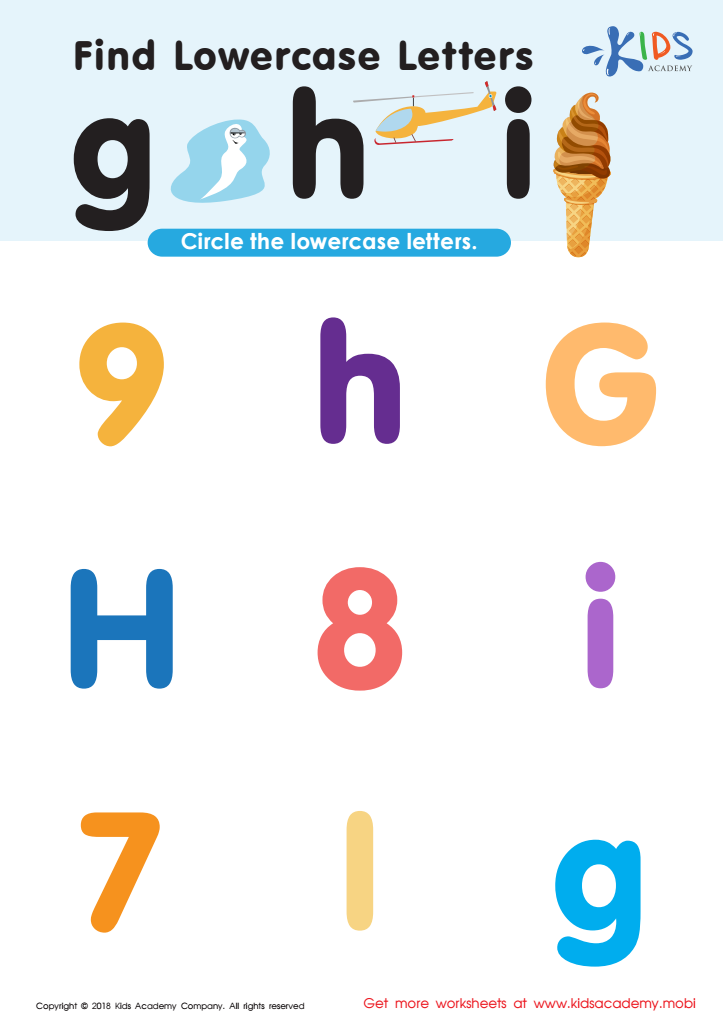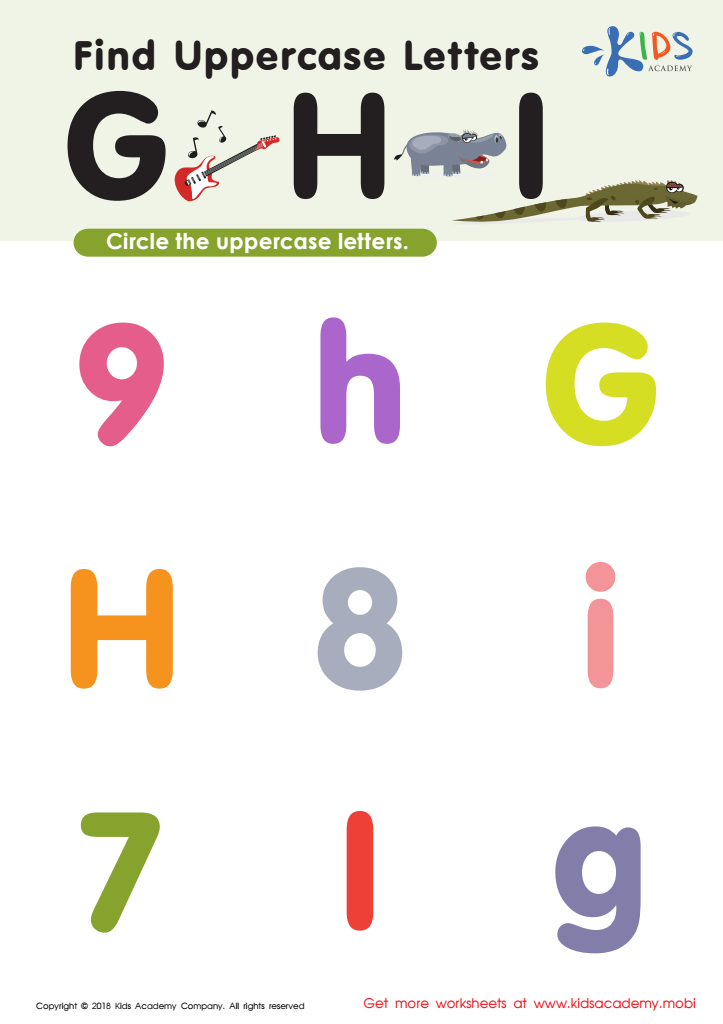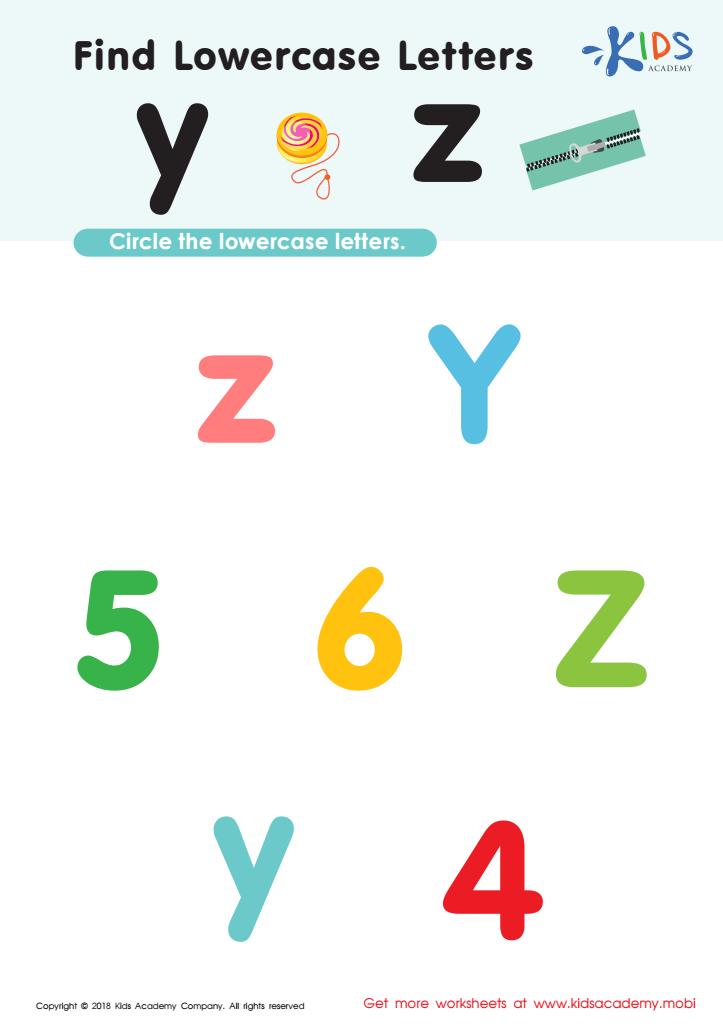Visual discrimination Normal Letter Recognition Worksheets for Ages 4-6
4 filtered results
-
From - To
Enhance your child’s letter recognition skills with our specially designed "Visual Discrimination Normal Letter Recognition Worksheets for Ages 4-6". These engaging and colorful printables help young learners differentiate between similar-looking letters, sharpening their visual discrimination abilities. By practicing with these worksheets, children will develop stronger reading and writing foundations while having fun. Perfect for preschoolers and kindergarteners, our worksheets support early literacy skills through hands-on activities that reinforce letter shapes and sounds. Give your child a head start in their education journey with our expert-approved resources designed to make learning both effective and enjoyable.


Find Lowercase Letters g h i Worksheet


Find Uppercase Letters G, H, and I Worksheet


Find Lowercase Letters y z Worksheet


Find Uppercase Letters V, W, X Worksheet
Visual discrimination and normal letter recognition are crucial skills that parents and teachers should focus on for children aged 4-6. These formative years lay the foundation for essential academic abilities like reading and writing. Visual discrimination—the ability to notice and compare differences and similarities in shapes, patterns, and colors—directly affects how children distinguish between different letters and numbers. This skill helps prevent confusion between characters like 'b' and 'd' or 'p' and 'q,' which are similar in appearance but vastly different in meaning.
When children possess strong visual discrimination skills, they are better equipped to recognize letters accurately and consistently. This recognition forms the basis for reading fluently and comprehensively. In turn, proficient reading sets the stage for academic success in all subjects, as nearly every area of learning involves some level of text engagement.
Additionally, fostering these skills early on can enhance a child’s confidence and motivation to learn, as they will have fewer struggles with basic tasks. Parents and teachers who prioritize visual discrimination activities—such as matching games, puzzles, and letter tracing—are setting up their children for a smoother educational journey. In doing so, they not only aid cognitive development but also nurture a child’s enthusiasm for learning.
 Assign to My Students
Assign to My Students















